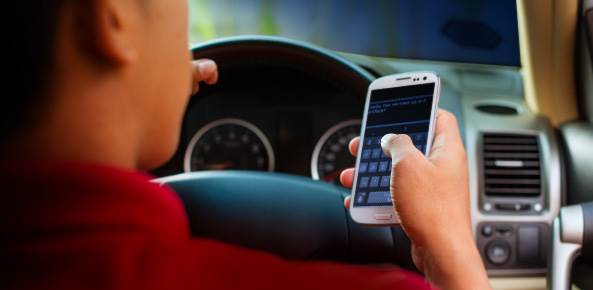![]()
As America continues to assess the impact of combining two favorite pastimes — driving and cell phone use — a new study from Virginia Tech shows that a range of phone related activities is putting younger motorists at risk.
But dialing while driving — a task that grows more uncommon with the proliferation of voice-command phones and cars — also represents a huge safety risk for more experienced drivers, as well.
Research Caveats
Results of the Virginia Tech study are interesting, although it’s important to note that the data ![]() is somewhat outdated. The study was based on data from the Naturalistic Teenage Driving Study and the Naturalistic 100-Car Driving Study, published in 2010. But original data for the study was collected from 2003 to 2008, when sophisticated and highly capable smartphones were not widely in use. (Keep in mind: the iPhone, for example, only first became available in June 2007.)
is somewhat outdated. The study was based on data from the Naturalistic Teenage Driving Study and the Naturalistic 100-Car Driving Study, published in 2010. But original data for the study was collected from 2003 to 2008, when sophisticated and highly capable smartphones were not widely in use. (Keep in mind: the iPhone, for example, only first became available in June 2007.)
In both studies, cameras, GPS trackers, accelerometers and other devices monitored the driving habits of a range of drivers. The teenage survey observed 42 new drivers (22 females and 20 males) from southwestern Virginia. The average age was 16, with about three weeks of driving experience.
The 100-Car Study monitored 109 participants (43 women and 66 men) ages 18 to 72 from the Washington, D.C. area.
Older Drivers More Disciplined
Details of the research were published in an article in the New England Journal of Medicine, Jan. 4. The team of researchers led by Sheila G. Klauer of Virginia Tech’s Transportation Institute reports that there were 167 at-fault accidents or near-crashes among the novice teen drivers, and, 518 at-fault accidents among the experienced drivers.
The younger drivers were prone to a range of dangerous habits such as dialing, texting, reaching for an object, eating or looking at roadside objects. The seasoned drivers behaved more responsibly, but still were prone to the temptation to dial their phones while driving.
In all cases, the common denominator was the driver shifting attention away from the front view while in motion, even momentarily.
“The secondary tasks associated with the risk of a crash or near-crash all required the driver to look away from the road ahead,” the researchers wrote in their discussion of the study. The prevalence of high-risk performance of secondary tasks was similar overall in the two groups, although it increased among young drivers over the 18-month study period, possibly because of increased confidence in driving over time.” (continued…)
NewsFactor Network




![[CES 2026] Quest For Perfect Color…Samsung To Push](https://loginby.com/itnews/wp-content/uploads/2025/12/CES-2026-Quest-For-Perfect-Color…Samsung-To-Push-100x75.jpg)

